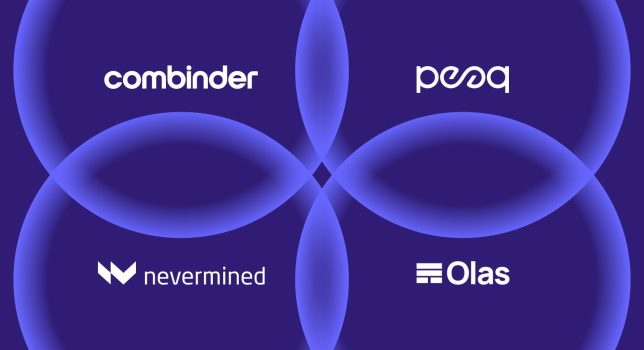Non-fungible tokens (NFTs) initially hit the cryptocurrency industry by storm, where some ambitious artworks, such as EVERYDAYS: THE FIRST 5000 DAYS by Mike Winkelmann, known as Beeple, sold at Christie’s for $69 million and genuinely shook things up.
Then, we saw NFT collections featuring 10,000 unique NFTs minted on Ethereum (ETH), such as the CryptoPunks, and the Bored Ape Yacht Club (BAYC), where the most expensive ones sold for millions.
It was clear at this point in time that NFTs represented something truly special. However, over time, the appeal surrounding them decreased. But has this really been the case?
Especially with the 2022 market crash, can NFTs survive?
Blockchain gaming became one of the most important ways in which non-fungible tokens (NFTs) began seeing a higher level of usage. Today, we will be going over how realistic the adoption rate for NFTs is in GameFi.
Adoption of NFTs and Gaming: NFTs and Their Usage in GameFi and Blockchain Gaming
NFTs were initially used as digital representations of artworks; however, over time represented a tokenized version of just about anything which can be tokenized and are now, in a way, certificates of authenticity existing on top of a blockchain network.
However, the ever-evolving market surrounding crypto-related activities as well as products has promoted additional use cases surrounding NFTs.
A GameFi ecosystem is based on top of blockchain technology, and all of the projects that exist within this sphere of crypto leverage different in-game economic setups as a means of rewarding players.
Typically, these rewards will come in the form of non-fungible tokens (NFTs), most of which are made available and tradable on NFT marketplace or game-specific marketplaces.
These items will typically come in the form of virtual land, costumes, or weapons and are essential when it comes to diversifying the overall experience.
Blockchain Gaming’s Economic Incentives
There are different economic setups, however, which enable these games to be unique. The most popular GameFi economic model is known as the Play-to-Earn (P2E) model, in which the game rewards players and keeps them engaged because it enables them to earn rewards by participating in various game activities.
This means players can just spend their time playing a game instead of spending real money. However, they can earn in-game currencies or NFTs, ones sold for crypto and converted into FIAT currencies.
However, if the player aims to be competitive within the game, they will likely also be completed to buy specific stronger NFTs or not sell the NFTs that they have. These NFTs can be strong weapons giving players a competitive edge, for example, incentivizing play.
If gamers really wanted to, they could sell their NFTs, if they are Ethereum-based, on OpenSea, and then get Ether (ETH) as a cryptocurrency. All that would be left for them to do is to visit a centralized exchange and swap the ETH for a FIAT currency such as USD. However, with the proper incentivization through the utility of the NFT itself, rarely would players feel the need to do this.
The adoption rate of this model and NFTs in gaming depends on the state, popularity, and overall performance of GameFi projects.
The State of GameFi in 2022
DappRadar published a study on December 1 where they went over the state of the GameFi industry throughout the past few months. The report claimed that 800,875 daily Unique Active Wallets (UAW) interacted with smart contracts related to games in November.
Out of all of the games featured on the website, Alien Worlds, with 225,000 UAWs, and Splinterlands, with 151,000 UAW, remained the two most played Web3 games.
Additionally, blockchain games and Metaverse-related projects managed to raise $534 million, and the total NFT in-game volume in October and November reached $55 million.
Out of those $55 million, Gods Unchained was the top game based on trading volume alone, generating 60% of the total trading volume for game-related assets.
The Wax protocol was the most dominant in gaming, with over 340,000 UAW, while BNB Chain was second at 171,269 UAW.
This report gives us a clear perspective as to how far the GameFi space has grown and how much NFTs are generating for these games and companies in terms of volume.
Now that we know there are over 800,000 daily unique active wallets interacting with blockchain-related gaming projects, we have a clear image and perspective the GameFi industry isn’t dying and is not affected by external factors occurring within the broader crypto space.
The Future of Blockchain Gaming and NFTs
In the broader crypto space, some figures advocate the future of NFTs and that their adoption is secure, such as OpenSea CEO Devin Finzer, who cited Reddit and Instagram’s implementation of NFTs, which is a positive outlook for the future of NFTs.
However, others might argue adoption might not be as realistic. With the introduction of different blockchains, aside from Ethereum, where DappRadar data indicates Wax, BNB Chain, Polygon (MATIC), Solana (SOL), EOS (EOS), and Hive (HIVE) are among the largest, we have seen an increased creation rate for NFTs.
Each of these networks aims to resolve historic issues NFT minting and transferring has had, such as slow speeds and high transaction fees.
Adoption of NFTs and the future
Today it is more flexible than ever before for creatives and gaming companies to bring their NFTs on a blockchain, where the fees can be a fraction of what they originally were on Ethereum, if not completely free, and create numerous incentives for players to collect these NFTs which have real in-game, or in-world utility and value.
With all of the data mentioned earlier taken into consideration and the fact that blockchain game projects are seeing hundreds of thousands of players embracing the future of NFTs, it is clear that mass adoption is a possibility.
Even the most recent 2022 crypto winter, or the collapse of large cryptocurrency exchanges such as FTX, did not slow down the development and growth of GameFi projects.
The crypto market can potentially be cleaned up and gain confidence again, and these GameFi and Metaverse projects are making this a reality with their high utility of NFTs, which is already broadening the adoption rate.









